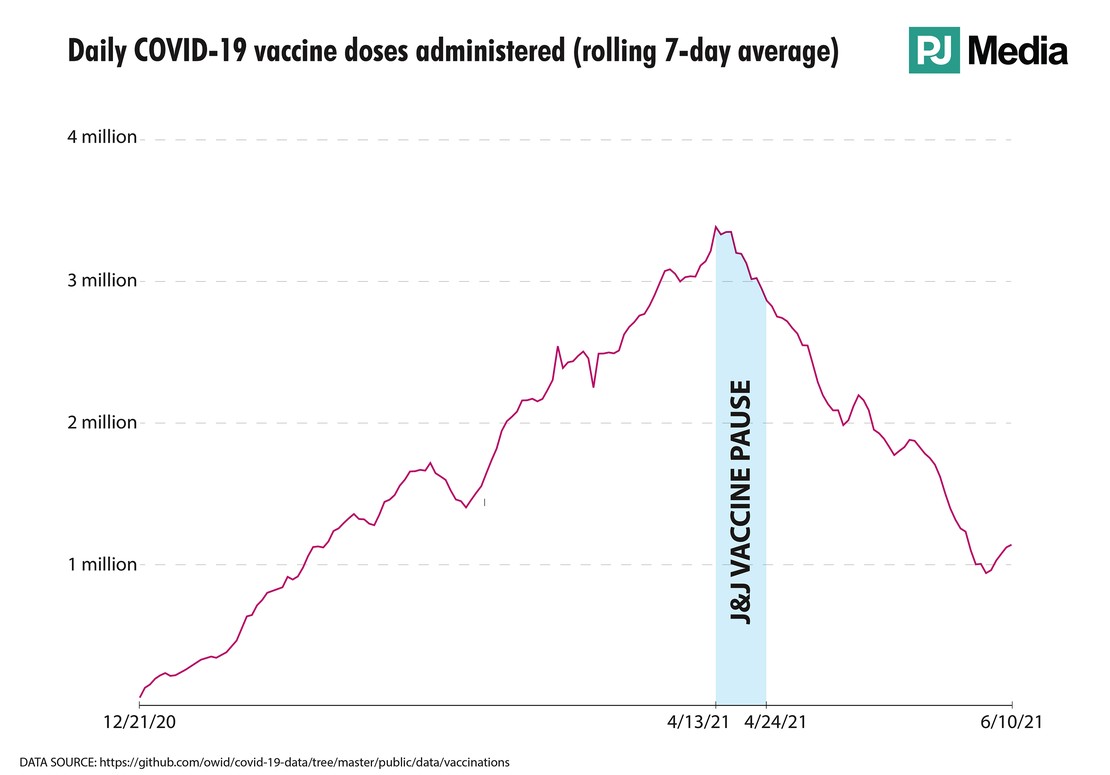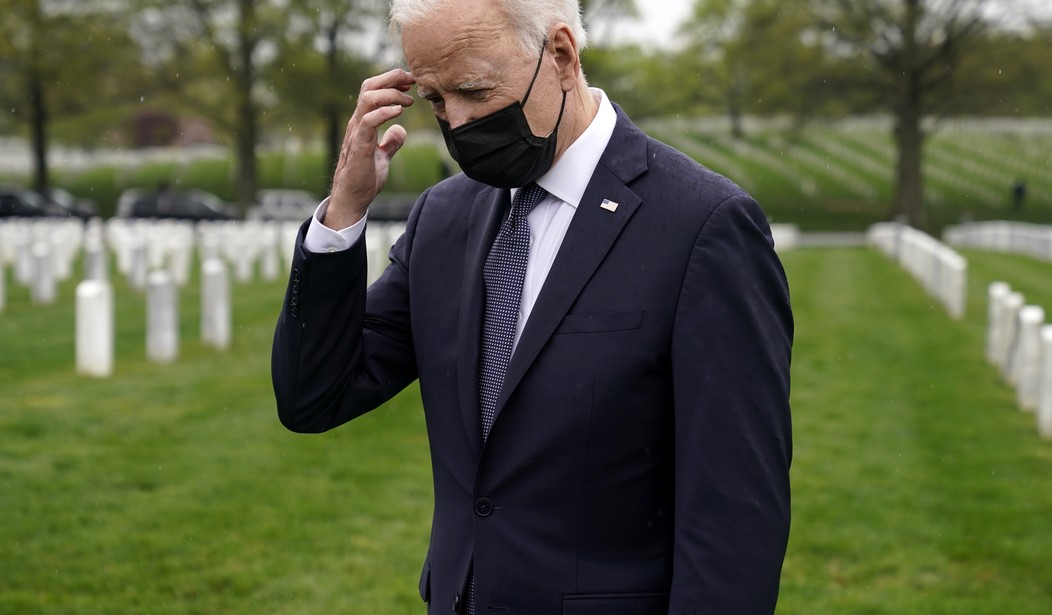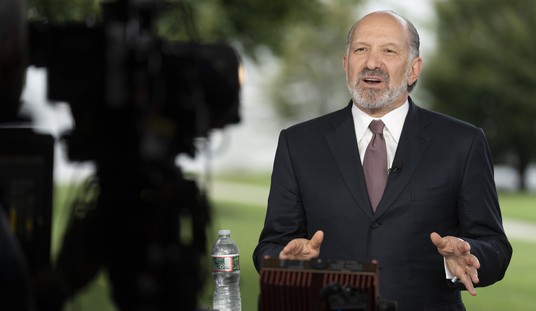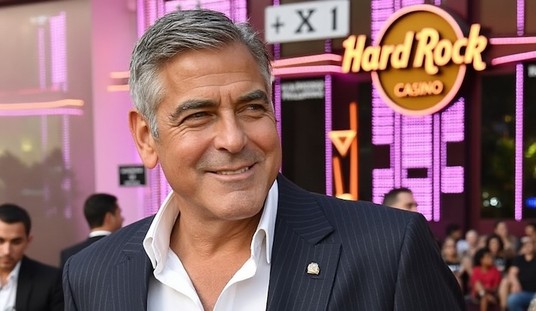After previously reaching vaccination goals already reached under Trump, Joe Biden set the ambitious target of 70 percent of U.S. adults being vaccinated by Independence Day.
It appears we’re “unlikely” to meet that goal. “The pace of new vaccinations in the U.S. has dropped to about 500,000 people per day – down from a high of 3.5 million per day in April,” reported the Daily Mail earlier this week. “The White House has launched a month-long blitz to combat vaccine hesitancy and a lack of urgency to get shots, particularly in the South and Midwest, but it is increasingly resigned to missing the president’s vaccination target.”
And it’s most likely Joe Biden’s fault.
I’ve argued that the Biden administration is to blame for a significant amount of vaccine hesitancy that is happening right now, and it all comes down to the decision to pause the Johnson & Johnson vaccine when a mere six out of nearly seven million doses caused severe blood clots.
Even Nate Silver trashed the pause. “6 cases out of 7 million people. What a disaster. This is going to get people killed,” he tweeted. “And it’s going to create more vaccine hesitancy. These people don’t understand cost-benefit analysis. They keep making mistakes by orders of magnitude.”
And he was right:

As the above graph makes clear, the Johnson & Johnson vaccine pause coincides with a sharp decline in vaccination doses administered—a decline that continued even after the pause was lifted. That absurd decision caused Americans to question the safety of not just the Johnson & Johnson vaccine, but the Pfizer and Moderna vaccines as well. Some have suggested the decline was a natural result of people who really wanted to get vaccinated already having been vaccinated, but the trend of a sharp decline in vaccinations beginning when the J&J pause was instituted would have to be the most bizarre coincidence ever, right?
“Why did the FDA recommend the pause anyway? Because of a combination of institutional culture, cognitive biases, and bureaucratic imperatives incentives, they greatly overweight the importance of rare adverse effects relative to people dying from COVID,” Silver argued in another tweet. “But unless they know about that institutional culture, it’s understandable that regular folks may think ‘hmm, maybe there’s more going on.’ Especially when public health officials have eroded trust by telling a lot of ‘noble lies’ to people, e.g. in the early days re: masks.”
Related: J&J COVID-19 Vaccine Pause Should Make Us Reconsider Recommending Vaccinations for Everyone
There is some good news though. Despite the negative impact of the absurd Johnson & Johnson vaccine pause, the United States ranks amongst the top countries in terms of the share of their population vaccinated (approximately 51 percent), and infection rates in the United States are also down—even as the country is slowly reopening.
“This virus, even a mild case can be with you for months,” Biden said while pitching the vaccine to young people. “It will impact your social life. It could have long-term implications for your health that we don’t even know about yet or fully understand yet. It’s true, young people are much less likely to die from Covid, but if you do not get vaccinated, you can get Covid sooner or later.”
But despite all the incentives being offered and the PR blitz, the downward trend of vaccinations hasn’t changed since mid-April. It didn’t have to be this way. The Johnson & Johnson vaccine pause was a huge mistake.










